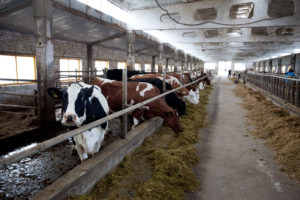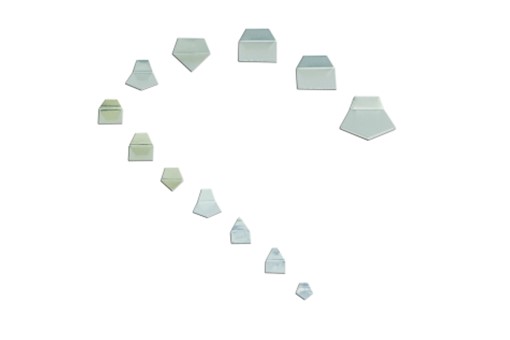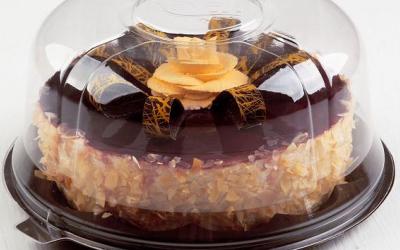"Without bread there will be nothing." Agrarians of Chausy district

Mogilev agrarians have a busy time, because it is not in vain that they say that a spring day feeds the year. All forces are thrown at making the laying of the future crop and weeding out on time. However, other issues of the industry should not be lost in the daily routine, because each of them is a separate component of a strong economy. The culture of agriculture, the work of dairy complexes, land reclamation, technological and labor discipline, the master's approach - this was also mentioned by the President during a working trip to the Gomel region, which became indicative for farmers in other regions. A BelTA correspondent visited the Chausy district to see how today's work becomes the key to tomorrow's success.
Early spring crops have already been sifted out in the region, but it's still too early to rest - machinery and people are still working in the fields. The focus is on future feed, which needs to be provided in full for the dairy herd. Demand is not only for the designated technological terms, but also for the technical condition of machines and units that must work properly on every inch of land without breakdowns and downtime. All equipment of JSC "Rudeya Grand" is also in the fields: soil preparation for fodder crops goes around the clock, and the sowing itself is organized in two shifts. Behind the harrow and the cultivator, seeders follow in the wake, every minute of daylight hours counts.JSC "Rudeya Grand"Today, the equipment is working on one of the fields, where a couple of years ago there was water and bushes grew. The reconstruction of the land was successful: unnecessary vegetation was uprooted, the most swampy areas were removed - drainage was laid and wells were installed, the site was plowed and cultivated. The result was an even and large array with the correct contour. Now these 42 hectares are successfully sown with oats - a fodder base for their own dairy herd.
“This year we have prepared well for the sowing season: we have seeds, there are working hands, the equipment is in good working order,” says Andrey Malinovsky, the HEAD of the agricultural enterprise section. buckwheat, millet, corn for silage. Over 70% of the total volume has already been sown, these are early spring crops. Buckwheat, millet and annual grasses remain. Six energy-saturated tractors MTZ 3022, three seeding units and much more will help. All machines are in the fields We will complete the spring campaign within a maximum of ten days, for this we have everything in stock."
In the Chaussky district, spring sowing is almost 21 thousand hectares, including a grain wedge - 12 thousand hectares. In total, agricultural land is more than 50 thousand hectares, of which 90% is arable land. By the way, in terms of the number of territories in the region, out of 21 districts, Chaussky ranks sixth. The scope of work of local farmers is large, so the inclusion of previously unused lands in the crop rotation is always a topical issue. Local agrarians are expanding through land reclamation, uprooting shrubs and other wild vegetation, and plowing abandoned household plots. Only this year, after putting things in order in such territories, agricultural land has grown by almost 800 hectares, including 212 hectares in the fields of Rudei Grand.
According to Andrei Malinovsky, it is important to include in the crop rotation not only large areas, but also small plots. “For farmers, the most important thing is that every piece of land works,” he shares. “Where the place is overgrown with shrubs or swampy, it is important to uproot, ameliorate and introduce these lands into crop rotation. "We can't leave these pieces - we plow everything up, refine it. Without using useful areas, we lose a very valuable resource, which is also a component of the future harvest. This cannot be done, everything must be done in a businesslike manner. Agriculture is hard work, but without a harvest , there will be no bread - this is our food security."
Vladimir Poterebkin, a Rudei Grand machine operator, agrees with such a competent and prudent approach, who feels more than confident driving a new nine-meter seeder. He says that before that he worked as a chief engineer, but one day he decided to try what the hard work of a grain grower is. On sowing is from 6 am to 8 pm. “I have been working at this agricultural enterprise for the tenth year already,” he shares. “ The work is hard, but someone has to sow bread. The future harvest depends on livestock feed, weight gain, and our well-being in general. Therefore, in agriculture, too, should not be random people - a lot depends on the professionalism and qualifications of the machine operator, including the correct operation of the equipment. The weather is also important. For example, this year the sowing began later than usual, so the pace is now intense."
Vladimir PoterebkinIn the spring, they work tirelessly in the neighboring JSC "Duzhevka", the main task is to fully provide forage. Almost 3.1 thousand heads should be fed, which is about 28 thousand tons of hay, hay, silage and fodder grain. The economy is trying to find a rational approach in everything and save where possible. A striking example is the new calf barn for 200 heads, which appeared just over two months ago. It was erected in an economic way in just 3 months. The lightweight structure is based on a metal frame and a concrete foundation, the upholstery is made of board, a natural material. The construction will stand idle for 50 years, they are confident in the economy, but the main thing here is the price of the issue: the calf house cost only Br150 thousand, which is at least ten times cheaper than a permanent building.
JSC "Duzhevka"“Our farm has a dairy complex, two MTFs and four calves,” says Vasily Larchenko, DIRECTOR of OAO Duzhevka. “A third of all heads are dairy herds. number of heifers, young animals aged from 3 to 6 months are kept here.In the future, this will give not only the renewal of the main dairy herd, but also year-round profit in the form of MILK and MEAT.According to calculations, with the introduction of one calf, the increase in milk yield on the farm will be 2 tons of milk per An important point is the safety of the young animals: from the moment of its transfer to a new building, no deaths of animals have been allowed here. Soon the construction of a second calf house of the same type and walking areas for animals will begin."
Petr KolesnevAccording to the first deputy chairman - head of the department for agriculture and food of the district executive committee Pyotr Kolesnev, this year it is planned to build four more light-weight plank calf houses on the territory of the Chausy district, which is an addition of 800 heads to the main herd.
Petr Mitrofanovich has been working in agriculture for 40 years, he devoted his entire conscious life to its development. Professional and life experience gave him confidence in one thing: if the manager and owner builds, introduces new technologies, moves forward, it means that the life of the industry and a single economy continues. "My grandfather and father said: the owner who builds. It is in this mandate that prosperity in the agro-industrial complex lies," he stressed.
"All branches of agriculture are closely interconnected and, in the end, everything - from crop production to mechanization - work for animal husbandry," Petr Kolesnev emphasized. meat and milk. All farms live all year round on livestock products, so today the most important thing is to prepare a high-quality forage base. In this case, there will be gains and milk yields, wintering will be successful. Thus, this year, 7.6 thousand tons of hay, 81,000 tons of haylage and about 90,000 tons of silage.
To help the agrarians of the region - new equipment, which this year replenished the agricultural fleet of vehicles. By the spring field work, six new seeders have been received here. Today, they have sown almost half of the grain in the region - about 5 thousand tons. The region also received five MTZ-3522 tractors, five nine-furrow plows, five manure spreaders, two AMKODOR loaders, two forage harvesters, two KPR-9 mowers. This made it possible to create a mechanized detachment on the basis of Chausy "Agroservice", which works both on its own farm and helps other agricultural enterprises in the region.
"On the ground, you just need to work - harmoniously, responsibly, in good faith, and what is given to us with the help of the state - seeds, fertilizers, and so on, must be used competently and according to technology. Task number 1 is to get a good harvest, feed animals, get milk and meat," concluded Pyotr Kolesnev.
Julia Evmenkova,
photo of the author,
BELTA.
Read together with it:
- The Russian Ministry of Agriculture proposes extending veterinary regulations until 2032.The extension includes regulations for the prevention and eradication of diseases such as bradsot (Clostridium septicum), trichinosis (Trichinella), blackleg (Clostridium chauvoei), and porcine reproductive and respiratory syndrome (PRRS). The proposed changes stipulate the following new deadlines: for bradsot and trichinosis - from March 1, 2......
- UniCredit заявил о галактических усилиях из-за санкций против РоссииUniCredit старается не нарушить «более 15 тыс. санкций», а также не «совершать ошибки», которые позволят изъять его активы в России, заявил гендиректор. После начала военной операции банк начал рассматривать возможность ухода Итальянский банк UniCredit прилагает «галактические усилия», пытаясь соблюсти международные санкции в отношении своего российского подразделения. Об этом заявил генеральный д...
- "Коллективы АПК способны решать любые задачи даже в непростых условиях". Назаров о заслугах сельхозпроизводителейЮрий Назаров 13 ноября, Минск. Обеспечение продовольственной безопасности страны - большое достижение трудовых коллективов аграриев, отметил управляющий делами Президента Республики Беларусь Юрий Назаров на торжественной церемонии награждения государственными и иными наградами работников АПК Управления делами Президента Республики Беларусь, передает корреспондент БЕЛТА. Торжественная церемония наг...
- He crawled to the icon with prayer. The true story of a man who overcame drug addiction.Alexander Ovchinnikov. Topic News. Our project's hero was a drug addict for many years. The thought that this was a dead end never left him, but his addiction proved stronger. One day, when he could no longer walk, he crawled to an icon in prayer. This became his first step toward a new life. Today, he heads a charity center that helps those who have given up hope and are unable to quit ALCOHOL an...
- Колумбия: При экспорте скота сертификация и прослеживаемость больше не являются необязательнымиВысококачественное животноводство, особенно при экспорте, требует сертификации и прослеживаемости. Это необходимые условия для выхода и конкуренции на многих международных рынках, а также на некоторых всё более требовательных внутренних рынках. Колумбийское животноводство не является исключением из этих правил, и, хотя предстоит ещё многое сделать, всё большее число ферм и компаний внедряют эти ме...




























































